This is a Guest Post by@BullDudeC ofBullDude.com.
- Under Chart Tools, on the Format tab, in the Current Selection group, click the arrow next to the Chart Elements box, and then click the chart element that you want to use. On the Format tab, in the Current Selection group, click Format Selection. In the Axis Options category, under Axis Options, select the Series in reverse order check box.
- As the name suggests, Stock charts in excel is used to see high-low values of variables in a data set. As the name suggests, it is mainly used in the stock market to track the stocks of different companies or stock's high-low price on different dates/intervals.
- Open the Excel file containing the chart you want to change. Click the X-axis you want to edit. Choose Chart Tools. Then click Format. Select Format Selection. Click on Axis Options, followed by Categories in reverse order, to change how categories are numbered. You can select the Axis Type to change the text-based chart into a date-based chart.
A Japanese candlestick chart is a type of visual price display of a financial instrument.
While the Average line is still selected, In the Design tab of the Chart Tools section of the Ribbon, click the Add Chart Element button. From the pop-up menu choose Lines High-Low Lines, as shown: 16. Next, format the high-low lines. The first step in creating a High-Low-Close stock market chart is to enter the data into the worksheet. Enter the data into cells A1 to E6 as shown in the image. Column A is labeled 'Date.' Column B has the heading 'Volume Traded.'
Usually charts are displayed as a line that combines the closing prices of the various trading sessions. The disadvantage of this type of display is that only the closing price of the session is displayed without giving any indication of the behavior of the price during the trading session.
This problem is solved by the Japanese candlestick chart, where for each trading session it is possible to identify the entire price behavior throughout the trading session. In particular, the low price, high price, closing price and opening price are shown.
In this short and simple tutorial you will learn how to build a Japanese candle chart using Microsoft Excel.
In this tutorial I used Microsoft Excel for Mac and I have created the Netflix (NFLX) candlestick chart using the prices from January 1 2020 to February 21 2020
TUTORIAL – 4 STEPS
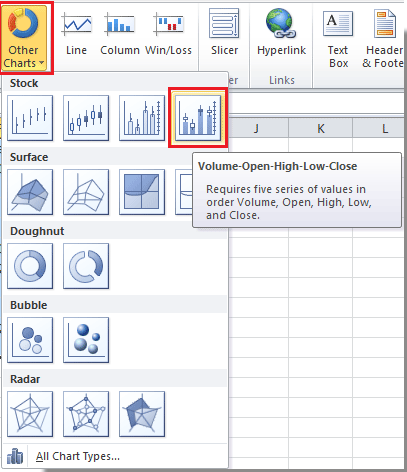
1) Filter the dates from January 1, 2020 to February 21, 2020 then download the opening, closing, low and high prices directly from Yahoo Finance site from the following link or just copy and paste them into an Excel spreadsheet:https://finance.yahoo.com/quote/NFLX/history?p=NFLX
2) Select only the columns relating to the “Date”, “Open”, “High”, “Low”, “Close*”, ignoring the last 2 (highlighted in red) and follow this simple procedure for creating the candlestick chart:
- Select “Insert” (point 1)
- Select the type of chart “Stock” (point 2) and from the 4 available chart types select the “Open-High-Low-Close” chart (point 3)
3) The chart that appears to you should be the same as this image below. As you can see, the graph is backwards due to the fact that our data range is from the most recent to the oldest. So we have to do these simple steps to get the final chart:
- Double click on the bar where there are the dates of the single days (point 4)
- A window will open on the right and you will have to click the “Categories in reverse order” (point 5)
If the price scale does not adjust automatically as in my image (300 as a minimum value) but starts from 0, read at the bottom of this article the “Extra” section where I explain how to adjust the scale.
4) At this point you should have the correct chart. The default candles are white (bullish) and black (bearish).
If you want to know how to set up green bullish candles and red bearish candles go to the extra section below.
EXTRA:
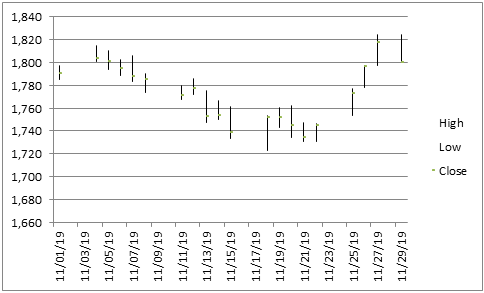
How to set the color (red and green) of the candles
In case you want to change the color of the candles follow this simple procedure:
Double click on a bullish candle (white) (point 1) and from the window that opens on your right click on “Color” (point 2) and choose the green (or one you prefer). Repeat the same procedure for bearish (black) candles and select the red color.
How to adjust the price scale to the chart
In the event that the price scale starts from 0, making the chart difficult to read, follow the following simple procedure:
Double click on the price scale (point 1) and from the window that opens on the right “Format Axis”, make sure you are in “Axis Options” and in the “Minimum” box (point 2) enter the value of 300.
Continue to follow NewTraderU.com because soon you will find a mini-guide on how to create moving averages (and the related cross) on Excel.
You can also see current chart analysis from @BullDudeC atBullDude.com.
You never thought you’d see the day, but you’ve slowly become obsessed with Excel charts. From your personal budget to your work projects, you look at almost everything and think, “Hey, I bet that’d make an awesome Excel chart!”
Alright, so maybe your enthusiasm for Excel charts hasn’t quite reached that level.
But, here’s the point: You’ve been playing around with the basics of Excel charts for a while (if not, stop here and read this post instead!) and now you’re ready to take things up a notch.
You’re in luck. In this post, we’re talking all about advanced Excel charts and some of the things you can do to take your simple charts to the next level.
Step up your Excel game
Download our print-ready shortcut cheatsheet for Excel.
What exactly is an advanced Excel chart?
Take a look in Excel, and you’ll quickly notice that there’s no shortage of charts available.
From the basics (like column charts, bar charts, line charts, and pie charts) to options you may have less familiarity with (like radar charts, stock charts, and surface charts), there are seemingly endless charts you can make within Excel.
We consider an advanced chart to be any chart that goes beyond the basics to display even more complex data.
That could be one of the more in-depth charts we just mentioned, like a surface chart, or it could be a combination chart—where you take two different chart types (like a bar chart and a line chart, for example) to visualize a more involved data set.
Creating an advanced Excel chart: A case study
With so many different chart types and the option to combine them, there’s no possible way to outline every single chart you could make in Excel.
So, for the sake of rolling up your sleeves and getting started, we’re going to pick one slightly more advanced chart and work on creating that.
In our basic Excel charts article, we analyzed the growth of an email subscriber list. Now, we have some more data added to that: the average email open rate for each month. We want to analyze the relationship between open rate and subscriber count—basically, does open rate increase or decrease the larger our subscriber list gets?
We’re going to create a combination chart to understand this relationship. We’ll use a column chart to represent the number of subscribers and a line chart to represent the open rate.
Let’s get started!
1. Double-check and highlight your data
As always, it’s smart to take a quick look to check if there are any issues or blatant errors in your data set.
Remember, your chart is tied directly to your data set—meaning any mistakes that appear there will also show up in your chart. So, now’s a good time to make sure you don’t have any spelling errors, digits that look off, or any other problems that you could have to go back and fix later.
After that, to get started with your chart, you’re going to highlight all of your data (including column headers) to get ready to insert your chart.
2. Insert a chart
With your data set highlighted, head up to the “Insert” menu and then select the chart type you’d like to use to represent your first set of data. In this case, we’re going to start with a column chart to represent our total email subscribers.
You’ll see that the chart you just created pulls in both sets of your data—your email subscribers and the short little column that shows your open rate (it’s so short it’s barely visible). Do you see those tiny little orange bars representing open rate?
Obviously, this isn’t easy to look at or analyze. Since the two numbers that are being represented are so drastically different (both in size and in metric—one’s an amount while the other is a percentage), it’s tough for one chart type to display this data effectively.
Don’t worry; we’re going to fix that in the following steps by inserting another chart type.
3. Select your second chart axis
Since we’re going to use the blue columns to represent our total number of email subscribers, we need to change the orange columns that represent open rate to a line.
To do so, you need to click on one of the orange bars to select that entire data series.
Fair warning: Because they’re so tiny on our current chart, they can be tough to click. To save you a ton of frustrated clicking around, here’s a helpful and straightforward trick to auto-select that orange data series:
- Click on the blue columns to start, since they’re bigger and much easier to click on
- Head to “Format,” select the “Series” drop-down in the upper left corner, and then change it to “Open Rate” (or whatever other variables you’re trying to select and adjust)
- That will auto-select all of the orange columns for us
With those orange columns selected, we’re ready to make the change and display that information as a line.
Right-click with those orange columns selected, navigate to “Format Data Series,” and then in the right sidebar that appears select “Secondary Axis.”
4. Change your second chart type
At this point, you might panic a little—it looks like the orange bars just wholly overtook your beautiful chart, and you’re beginning to think you screwed everything up.
First of all, take a deep breath. This is supposed to happen, and getting things to look right again is a quick and simple step.
Right click on those newly created orange columns, head up to the “Chart Design” tab in the ribbon, click the “Change Chart Type” button, and then select your line chart.
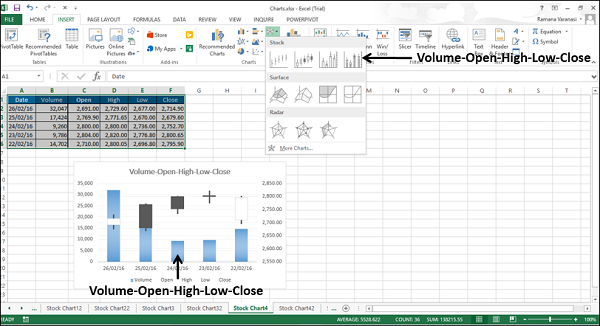
That’s it—now your total number of email subscribers are displayed as columns, and your line chart shows the open rate.
5. Fine-tune your chart
With the bones of your chart in place, now you can do things like add a chart title, adjust your colors, and even add axis labels (all of which we went over in the basic chart article).
Now is also an excellent time to ensure that nothing looks off in your chart and that you didn’t let any mistakes or errors slip through.
After doing so, we end up with a chart that looks like this:
Using this, we can now see if there’s a noticeable trend. Indeed, our open rate does seem to dip as our subscriber list increases—which makes sense.
Three more advanced charting tips
You’ve mastered that combination chart, and now you want to know if there are any other more advanced tricks and hacks you can use with your charts.
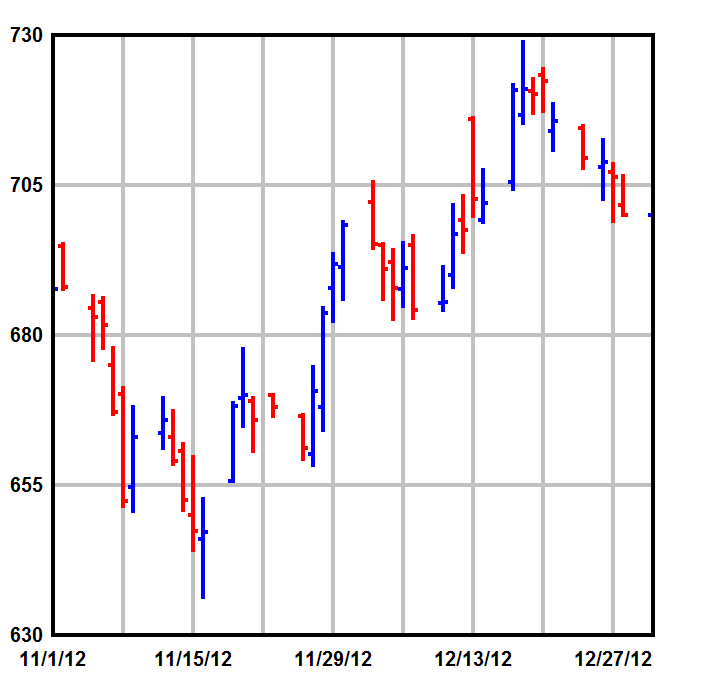
Well, of course, there are! We’ve touched on just a few of them below.
1. Insert a table in a chart
While the chart we’ve created is great for looking for any trends, it doesn’t show a tremendous amount of detail. For example, it’s hard to tell precisely what the open rate or subscriber count was during any given month—you can only get an estimate by looking at the columns and line.
Inserting a data table within your chart is handy if you also need to show detailed values and not just an overall trend.
To insert that table, click anywhere within your chart, go to the “Chart Design” tab in the ribbon, click the “Insert Chart Element” button, select “Data Table,” and then decide to display your table with or without a legend. In this case, we’re going to skip the legend.
You’ll see that a table is now inserted directly within your chart.
It looks a little crowded to start, but you can make some edits to change that. Keep in mind that you’ll need to edit the text within your existing dataset (rather than within the table).
After doing so, here’s a look at our chart including the table:
2. Add data labels
Maybe you don’t want to clutter up your chart with a table, but you still want to display more detailed digits. Adding data labels puts a number at a point above your line or column to give a better indication of values.
Adding those data labels is simple. Just right-click on your line or your columns and select “Add Data Labels.” That’s it!
3. Add another variable
Remember, there’s only so much information you can display on a single chart—because you’re limited by three axes.
However, if you have another variable that has the same metric or unit of measure as one of your existing variables, you can add that to your chart.
For example, if we also wanted to add click-through rate to our chart, we could do so because it’s a percentage just like the open rate. But, if you wanted to incorporate the time of day an email was sent, you’d need a separate chart—because there’s currently no axis available to display the measure of time.
Make sense? Alright, so let’s say we did want to add click-through rate to our chart. To do so, you need to make sure that data appears in your data set.
With that ready to go, right click within your existing chart and go to “Select Data.” Within that pop-up, click the plus sign (it’s “Add Variable” on a PC) and then click that little box displayed in the “Y-Axis” field. Select only your data (no column headers), hit the enter key, and then click “OK.”
You’ll see that an additional line representing click-through rate has been added to your chart.
If you want to make click-through rate appear in your chart legend so that viewers know what that line is representing (right now it just says “Series 3” in your legend), right-click within your chart again and go to “Select Data.”
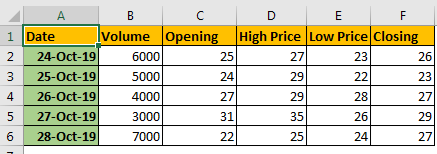
Click on your new series (which isn’t yet named and is just called “Series 3”), click in the “Name” field, click the little box that allows you to select from your data set, and then click the appropriate column header. Hit “Enter” and then click OK.
That’s it! You’ve added a line for click-through rate and also added it to your legend:
Want to learn even more about Excel charts?
High Low Chart In Excel Function
Are you feeling like an Excel charts pro? We’ve covered a lot here that will help give your Excel charts game a boost.
But, if you’re looking to dig in even deeper, check out our advanced Excel course to sink your teeth into even more tips, tricks, and tutorials that will transform you into a total Excel whiz.
Ready to become a certified Excel ninja?
High Low Bar Chart Excel
Start learning for free with GoSkills courses